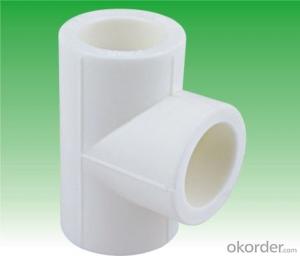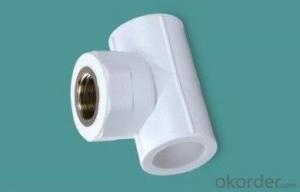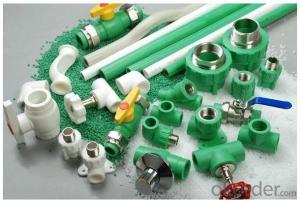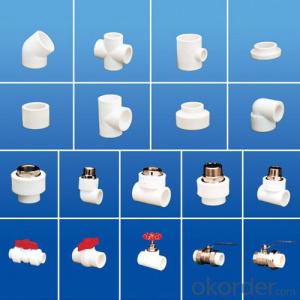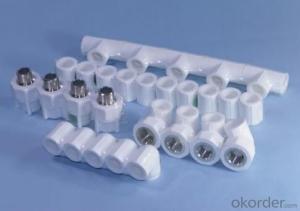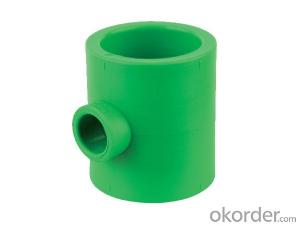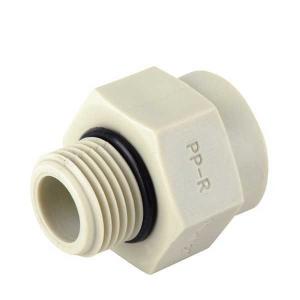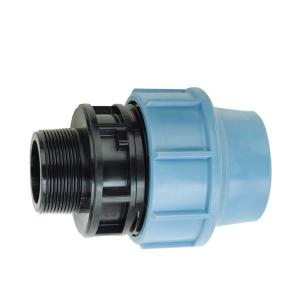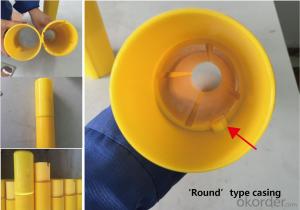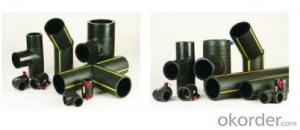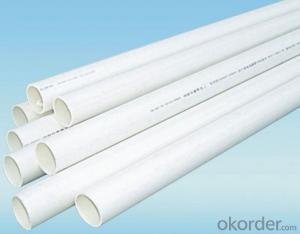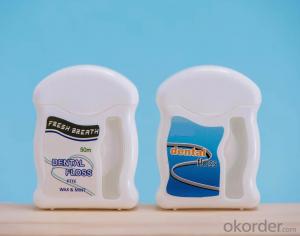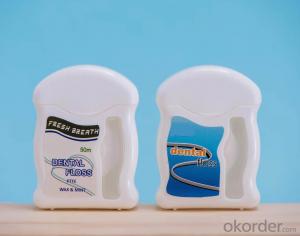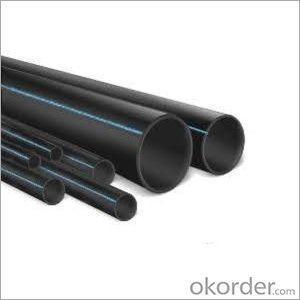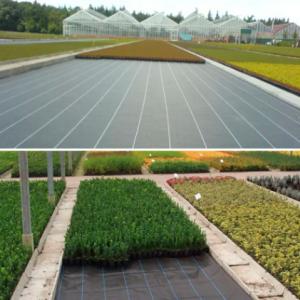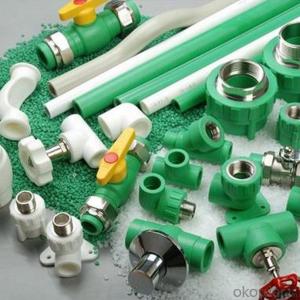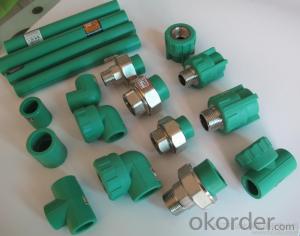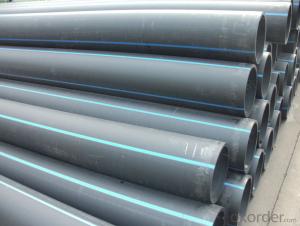China PPR Equal Tees for Landscape Irrigation Application
- Loading Port:
- Dalian
- Payment Terms:
- TT OR LC
- Min Order Qty:
- 1000 pc
- Supply Capability:
- 100000 pc/month
OKorder Service Pledge
OKorder Financial Service
You Might Also Like
Product Overview
PP-R (polypropylene random) tube called type three polypropylene pipe and is also called the PP-R pipe or PPR pipe, with energy saving, environmental protection, high strength, corrosion resistance, with smooth inner wall has the advantages of scale, construction and easy maintenance, long service life, widely used in building water supply and drainage, urban drainage city gas and power cable sheath, and industrial fluid transportation, agricultural irrigation construction, municipal, industrial and agricultural fields. The PP-R pipe is made of random copolymerized polypropylene and is extruded into tubes to be molded into tubes.
Advantanges
1, High Temperature Resistance: the maximum sustained working temperature is up to 70 Degrees Celsius, the maximum transient temperature is up to 95 Degrees Celsius.
2, Heat insulation and Saving Energy: low thermal conductivity which is only 1/1500 of brass pipe, and 1/250 of steel pipe.
Non-toxic: no heavy metal additives would not be covered with dirty or contaminated by bacterium.
3, Corrosion Resistant: resist chemical matters or electron chemical corrosion.
4, Lower Installation Costs: light weight and good hot-melt performance can reduce installation costs by as much as 50% over metal piping system.
5, Higher Flow Capacity: smooth interior walls result in lower pressure loss and higher volume than metal pipes.
6, Long Life: more than 50 years under normal conditions.
7, Recycled and Environment-friendly
Product Description
Product name | Size | Weight | Pack |
Equal tee | (Gram/m) | (m/pack) | |
T16 | 12.5 | 1300 | |
T20 | 19.4 | 800 | |
T25 | 30.5 | 450 | |
T32 | 48.2 | 260 | |
T40 | 90.8 | 150 | |
T50 | 142.5 | 106 | |
T63 | 275.3 | 54 | |
T75 | 515.0 | 30 | |
T90 | 712.0 | 18 | |
T110 | 1082.0 | 12 | |
T125 | 1544.0 | 8 | |
T160 | 2531.0 | 4 |
Product Show
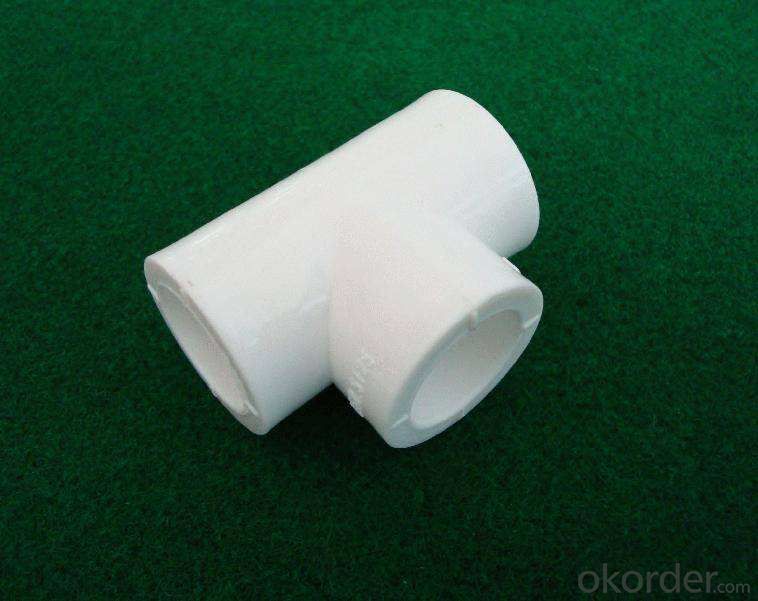


FAQ
Q1: How Can I Get A Sample?
A1: You can get samples by communicate with our export sales.
Q2: How Long Is Delivery?
A2: Delivery time will be30-45days according to order quantity.
Q3: What Is The MOQ?
A3: MOQ depends on different items.
Q4: What Is Our Normal Payments Terms?
A4: Our normal payment terms now is: T/T, L/C or western union, pay
- Q:Are plastic pipe fittings resistant to water hammer?
- Yes, plastic pipe fittings are generally resistant to water hammer. Due to their flexibility and ability to absorb pressure spikes, plastic fittings can help minimize the impact of water hammer in plumbing systems. However, it is important to choose fittings that are specifically designed to handle water hammer and follow proper installation guidelines to ensure optimal performance.
- Q:Can plastic pipe fittings be used for fire sprinkler systems?
- Yes, plastic pipe fittings can be used for fire sprinkler systems. However, the specific type of plastic used must be approved for fire protection applications and compliant with the relevant fire safety standards and codes. Additionally, the design and installation of the system should be done by a qualified professional to ensure its effectiveness and safety.
- Q:Can plastic pipe fittings be used for central vacuum systems?
- Yes, plastic pipe fittings can be used for central vacuum systems. Plastic fittings are commonly used in central vacuum installations due to their durability, affordability, and ease of installation. They are designed to effectively connect different sections of the vacuum system and provide a tight seal to prevent air leakage. However, it is important to ensure that the specific plastic fittings chosen are compatible with the central vacuum system and meet the necessary industry standards for safety and performance.
- Q:Can plastic pipe fittings be used for hot water applications?
- Yes, plastic pipe fittings can be used for hot water applications. However, it is important to ensure that the plastic used is suitable for high temperatures and meets the necessary standards and requirements for hot water plumbing.
- Q:What is the PVC pipe fitting?
- PVC pipe (PVC-U pipe) rigid PVC pipe is made of PVC resin and stabilizer, lubricant and so on. It is extruded and formed by hot pressing method. It is the earliest plastic pipe to be developed and applied. PVC-U pipes are corrosion resistant, easy to adhere, low in price and hard in texture, but because of the exudation of PVC-U monomers and additives, they are only suitable for the feed water system with a temperature of not more than 45 DEG C. Plastic pipes are used to transport potable water, waste water, chemicals, heating and cooling fluids, foodstuffs, ultrapure liquids, slurries, gases, compressed air, and vacuum systems.
- Q:Can plastic pipe fittings be recycled?
- Yes, plastic pipe fittings can be recycled.
- Q:Can plastic pipe fittings be used for medical gas systems?
- No, plastic pipe fittings should not be used for medical gas systems. These systems require materials that are specifically designed and approved for medical use, such as copper or stainless steel fittings, to ensure the safety and integrity of the gas supply. Plastic fittings may not be able to withstand the high pressures and potential hazards associated with medical gases.
- Q:How do you connect plastic pipe fittings?
- To connect plastic pipe fittings, you typically use solvent cement specifically designed for plastic pipes. First, ensure the pipe ends are clean and free from debris or burrs. Then, apply a generous coat of solvent cement to both the outside of the pipe and the inside of the fitting. Insert the pipe fully into the fitting, giving it a slight twist to evenly distribute the cement. Hold the joint together firmly for a few seconds to allow the cement to set. Finally, let the joint cure for the recommended time before applying any pressure or testing the connection.
- Q:Can plastic pipe fittings be used for gas piping systems?
- Yes, plastic pipe fittings can be used for gas piping systems. However, it is important to ensure that the fittings are specifically designed and approved for use with gas and meet the necessary safety standards. It is recommended to consult with a professional plumber or gas technician to determine the appropriate fittings for your specific gas piping system.
- Q:How do plastic pipe fittings compare to ABS fittings?
- Plastic pipe fittings and ABS fittings are both widely used in plumbing systems, but there are some key differences to consider. ABS (acrylonitrile butadiene styrene) fittings are known for their durability, impact resistance, and chemical resistance. They are commonly used in drain, waste, and vent (DWV) systems, as well as in low-pressure applications. On the other hand, plastic pipe fittings refer to a broader category that includes various materials like PVC (polyvinyl chloride), CPVC (chlorinated polyvinyl chloride), and PEX (cross-linked polyethylene). These fittings offer different advantages depending on the specific material used. PVC fittings are often used for water supply applications due to their excellent corrosion resistance and affordability, while CPVC fittings are suitable for hot water systems due to their higher temperature resistance. PEX fittings are commonly used in flexible piping systems due to their flexibility and ease of installation. In summary, while ABS fittings are specifically designed for DWV systems and offer excellent impact and chemical resistance, plastic pipe fittings encompass a wider range of materials with varying characteristics. The choice between them depends on the specific application and requirements of the plumbing system.
1. Manufacturer Overview |
|
|---|---|
| Location | |
| Year Established | |
| Annual Output Value | |
| Main Markets | |
| Company Certifications | |
2. Manufacturer Certificates |
|
|---|---|
| a) Certification Name | |
| Range | |
| Reference | |
| Validity Period | |
3. Manufacturer Capability |
|
|---|---|
| a)Trade Capacity | |
| Nearest Port | |
| Export Percentage | |
| No.of Employees in Trade Department | |
| Language Spoken: | |
| b)Factory Information | |
| Factory Size: | |
| No. of Production Lines | |
| Contract Manufacturing | |
| Product Price Range | |
Send your message to us
China PPR Equal Tees for Landscape Irrigation Application
- Loading Port:
- Dalian
- Payment Terms:
- TT OR LC
- Min Order Qty:
- 1000 pc
- Supply Capability:
- 100000 pc/month
OKorder Service Pledge
OKorder Financial Service
Similar products
New products
Hot products
Related keywords
